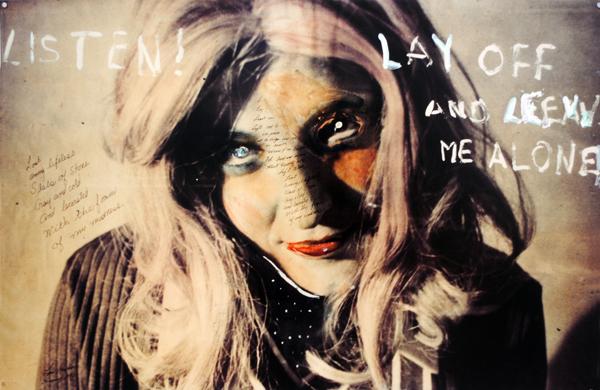Modern Art Oxford is presenting ‘Origins of the Species (Part 2)’ an expansive exhibition of works by the acclaimed US artist Lynn Hershman Leeson. Surveying the artist’s large body of work from 1959 to the present, and exploring Hershman Leeson’s prophetic oeuvre which foresaw our obsession with technology and its effect on the nature of identity long before anyone ever created a profile page – but the artist’s realisation – and our potential futures do not stop there.
The American artist and filmmaker, who has collaborated with actress Tilda Swinton on more than one occasion, has created a cinematic installation, The Infinity Engine, which Hershman Leeson developed over a number of years in association with scientists in the USA and recently in the UK with the University of Oxford. The work explores the artists latest interest in the limits and implications of genetic research; Taking a critical look at the ramifications of the manipulation of our genome’s, creating an immersive environment that explores the ethical implications facing society today – post the ‘mere’ manipulation of media.
But the artist’s work has always emphasised interactivity and social commentary, Hershman Leeson was perhaps the first to focus on the changing nature of identity via the 20th century’s extensive technological incursion way back when. From 1974 until 1978, the artist created a fictional persona and alter ego: that of Roberta Breitmore. The creation of Roberta consisted of a physical self-transformation of Hershman Leeson through make-up, clothing, and wigs. But unlike artists such as Cindy Sherman; Hershman Leeson’s creation was a fully-fledged, ‘complete’ personality who existed over an extended period of time and whose existence could be proven in the real world through actual physical evidence. The artist lived her creation: this reality included a driver’s license and credit card, and even the existence of letters from her psychiatrist.
Image: Lynn Hershman Leeson, Origins Of The Species (Part 2) Modern Art, Oxford. P A Black © Artlyst 2015
Later Hershman Leeson ‘split’ her character as an expression of the multiplicity of media manipulation, by hiring three additional performers to enact the character. The ‘clones’ adopted the same look and attire, engaged in some of Roberta’s correspondence, and also went on some of the character/artist’s dates.
Finally the Leeson withdrew from her character leaving the three ‘clones’ to continue her work, until the multiples were exorcised from their performers at the Palazzo dei Diamanti in Ferrara, Italy in 1978, with an exorcism at the grave of the infamous Lucrezia Borgia.
Lynn Hershman Leeson was kind enough to talk to Artlyst at the opening of her exhibition at Modern Art Oxford, which chronicles the artist’s prophetic reflection of the dawn of media and its effect on our modern identity.
Artlyst: “Your work is a very early focus on media and the manipulation of identity, you got there before a lot of artists, I can see a quality in Cindy Sherman’s work for example that may have existed in your own some time beforehand?”
Lynn Hershman Leeson: But unlike myself Cindy Sherman – or Nikki S. Lee, never really lived as the person. The difference is Roberta had real life experience, so it wasn’t just taking a photograph of somebody, it was really understanding the culture of that time.”
A: “You often use your own visual identity in your work, in a way you’re obfuscating your own identity as a reflection of what media is doing to the identity of self?”
LHL: “Yes. Media tries to manipulate us, and we become aware of that manipulation of the culture.”
A: “Your response to media obviously so pre-dates the revolution of social media it’s almost prophetic?”
LHL: “Yes but now the work I’m doing is about biological engineering and how that is going to effect us. I think that I’m lucky that I live in the Bay Area as a lot of these things are being invented, Netscape, Google, Twitter – all these things are being invented there – conversations between programmers that are constantly happening way before it reaches the public.”
A: “So you are leaving behind the focus on media as a manipulation of identity and now focusing on biological manipulation of the self?”
LHL: “It’s the same thing as media, but manipulation of identity through genetic engineering, but not the surface with plastic surgery and alike. Just like surveillance in the past has been [a focus] on ‘surface’ happenings – this thing is in your bloodstream – people can track who you and know all about your history. DNA is a perfect archive. That’s the infinity engine in the exhibition. It’s worse than cloning, its personal, and effects all living things.”
Words: Lynn Hershman Leeson with Paul Black. Photos: courtesy of the P A Black and Modern Art, Oxford © 2015 Artlyst all rights reserved
Lynn Hershman Leeson: Origins Of The Species Part 2 – Modern Art Oxford – until 9 August 2015

